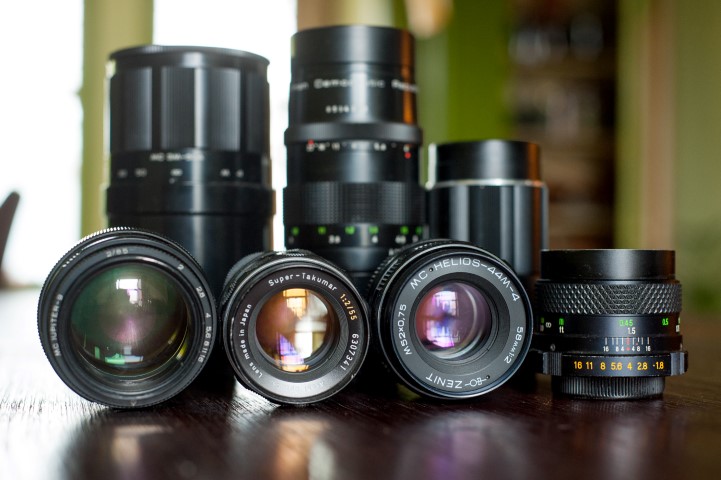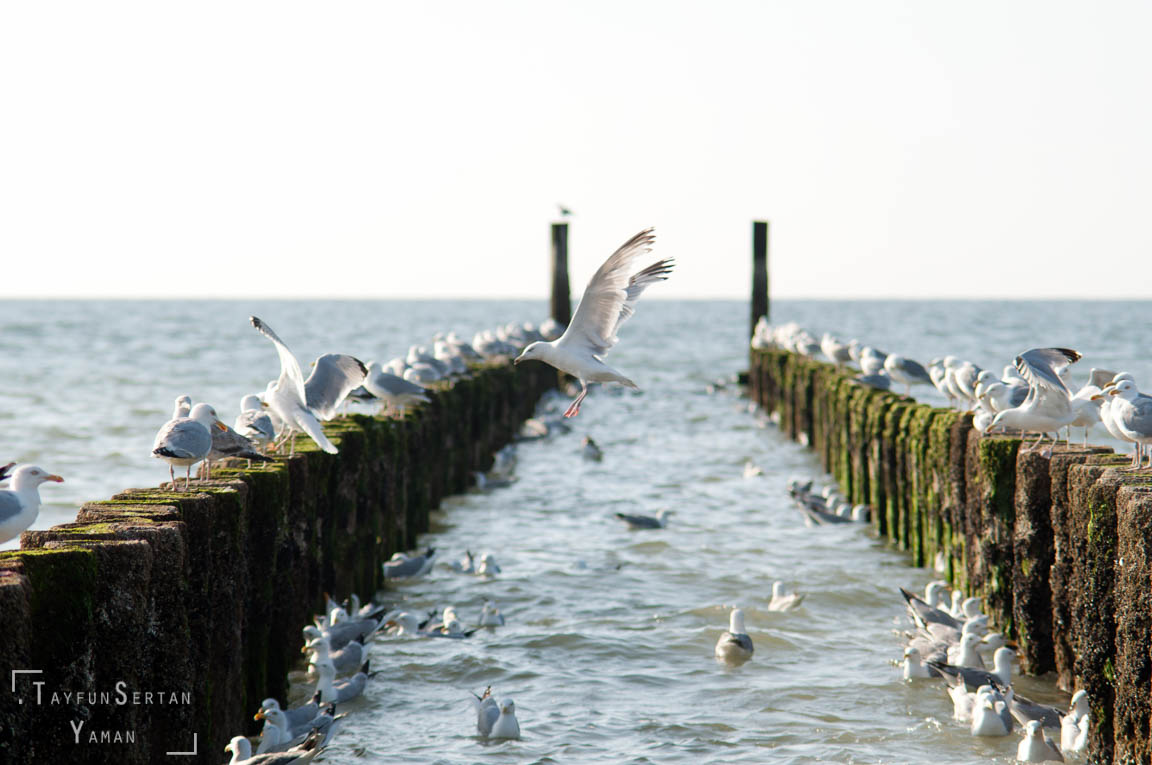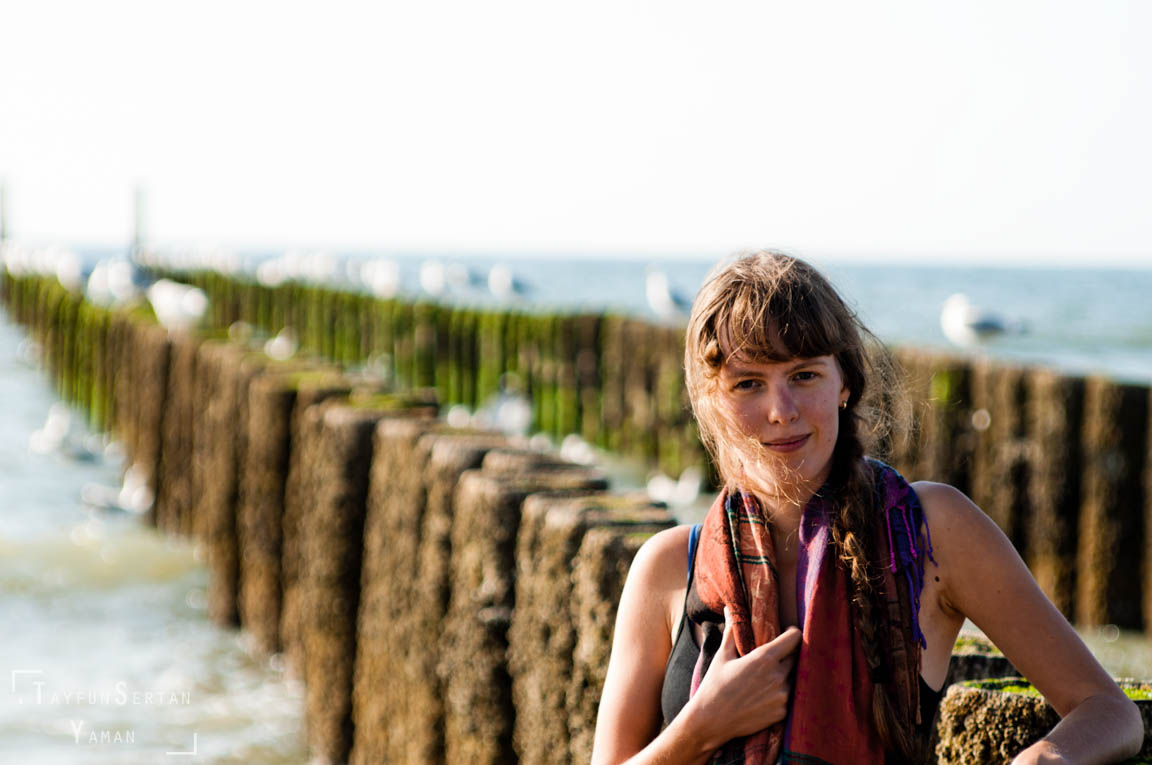21-Nov-2017
Using vintage screw mount (M42) lenses on your modern SLR camera
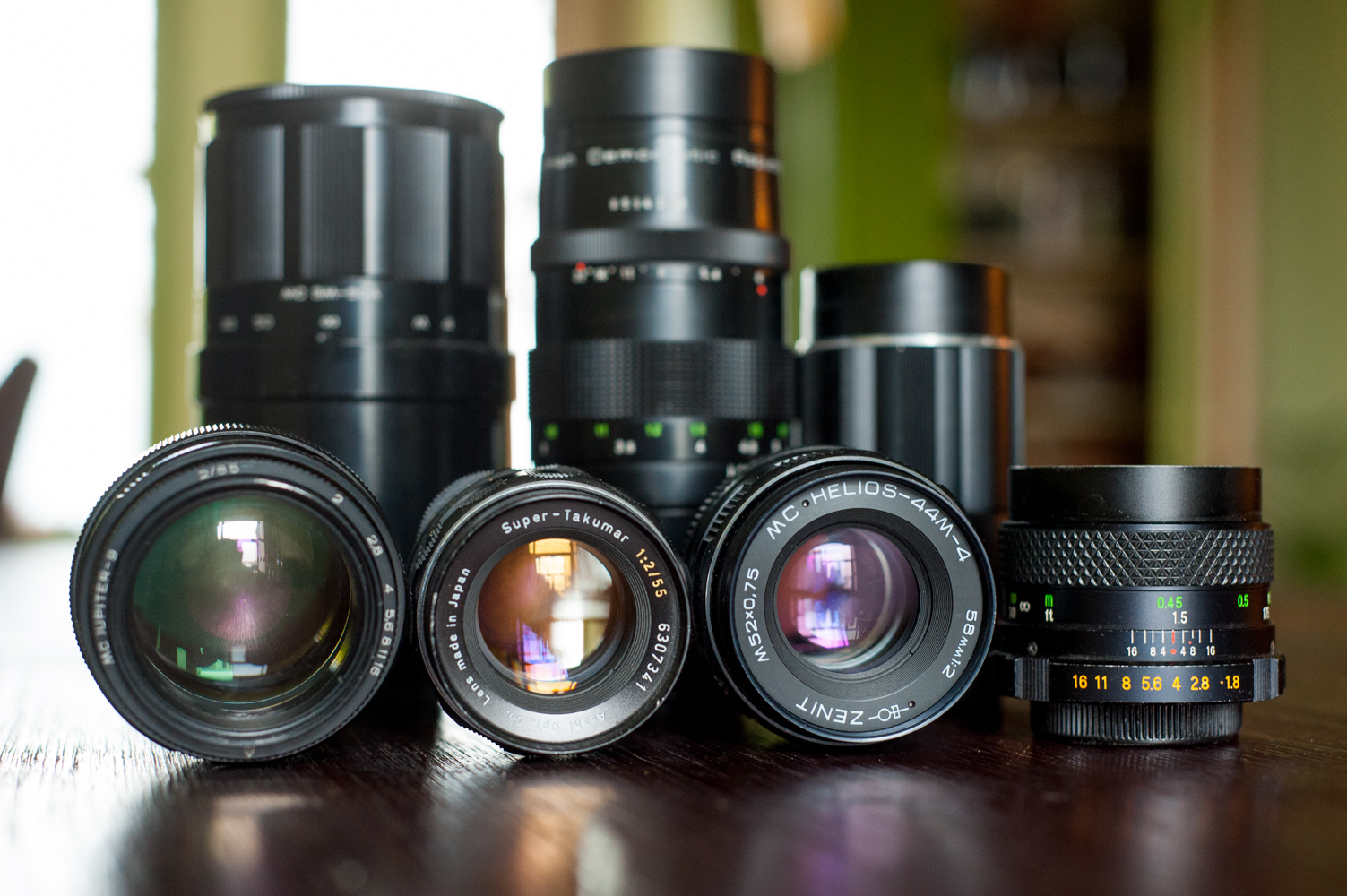
(Important note: This article contains affiliate links for which I may be compensated)
Have you ever wondered if you can use vintage film camera lenses on your modern DSLR camera's? Perhaps one of those sitting on your family's locker for so many years? Here in this article I will tell you how to use vintage screw-mount lenses (mount m42 lenses) in your modern slr camera.
Sure there are a lot of different vintage camera and lens brands with different mounts you can find around, but M42 mount has its special place within all of them since it is used by so many beautiful vintage camera's from 1949 to 1980s. Amongs those are vintage Zeiss Contax cameras, Soviet Zenit cameras, Pentax Spotmatic cameras, Mamiya sekor cameras, Praktica cameras and Petri cameras which we will list later. On websites like eBay you can find a lot of lenses from that age which are sold for quite affordable prices. But what exactly can we do with those lenses? Isn't it better to use our modern and sharp automatic focus lenses instead of trying to fit one of those to our camera's, what is the point of using one of those?
Today when we want to buy a camera lens, we use internet search to check reviews and tests on that lens and try to buy the best one which fits our budget. Those tests include some measurable values for the lens such as sharpness, distortion, CA amount and resolution; and give the lens a score depending on performance on those areas. Therefore today's camera lens production mostly based on getting better points in those measurements. In the old days when people did not have internet to check scores and test results done by specific measurements on the lens, they used to evaluate cameras and lenses comparing each others photos for if they look better or not. So, vintage lenses are coming from a different era and in that era building a lens for getting the best measurement scores was not as important as today. They are built to last, most of the time having metal bodies. They have unique photographic characters that are so much fun to play with, mostly with very beautiful backgrounds (bokeh), unique colors and good contrast out of the lens. You get nice surprises such as beautiful out of focus area rendering, or tactile 3D like feeling when you shoot with those lenses. They are not the sharpest if you compare with todays DSLR lenses, but most of them are quite acceptable on sharpness, and with some of them it is very hard to see the difference with today's hi-tech lenses.
Today the photography trend is much different, using as sharp lenses as possible and afterwards giving the photos various 'instagram style' effects to make them look as if they are taken with a vintage plastic camera lens. Today's lenses are made with plastic bodies because they may become technologically 'obsolete' any moment in the future instead of rugged metal bodies. And for some of them even using lower grade or plastic glass with special hi-tech coatings to reduce lens costs.
In short, vintage lenses are different than today's lenses and taking photos with them is so much fun. They are relatively cheap compared to any modern lens today, some of them you can buy from a used products shop or a flee market for a cost close to nothing together with its camera. So, you can get yourself a good collection of those easily and experiment with their unique beautiful characteristics.
Here you find some photos I took with some M42 lenses on my Nikon camera's :
More: Screw mount (M42) Lenses Photo Gallery
How can I use them in my camera?
Many camera brands need a very simple and cheap metal adapter to use it on your DSLR camera,... expect 'Nikon'! Nikon F mount cameras, which include all today's DSLR ones, somehow decided to make their flange to focal plane distance different from all other camera brands, also M42 mount. For that reason, if you use a simple adapter for your M42 lens on your Nikon camera, you cannot focus to infinity with that lens, but shorter than infinity. The maximum focus distance changes from lens to lens ( for example around 20m for a 55mm lens). To be able to focus on infinity, you have to use an adapter with a correction glass on it, which corrects the flange to focal plane distance and also acts like a small teleconverter. And all those glasses, this way or that way, deteriorate the quality of the image quality of your lens. I have two of those and will soon publish another article for an image quality comparison between those two glass adapters and an adapter without correction glass on Nikon. That does not mean you cannot enjoy your using vintage lenses on your Nikon camera but should be aware of that and you can either focus to shorter distance without correction glass or use post processing to fix image's taken with those glass adapters.
When you choose your metal adapter, make sure it is thick and strong with proper mount, since there are a lot of adapters made of cheap thin metal plate which will damage your camera mount.
You may check for an adapter that fits your camera on eBay :
Check M42 lens adapters for DSLR cameras on eBay
Now lets have a quick look at some of the M42 era lenses.
Russian Zenit lenses :
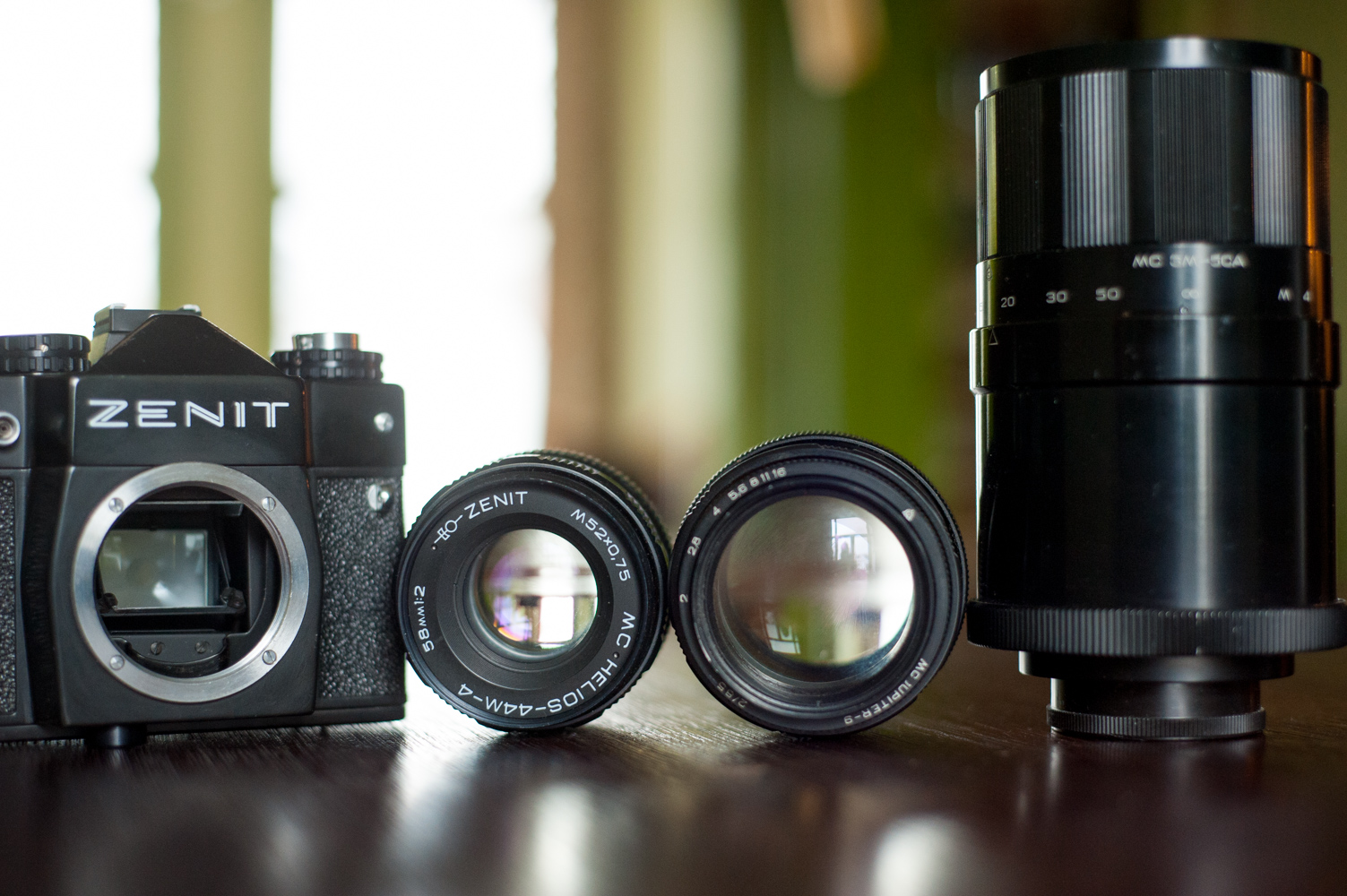
Zenit lenses are the first ones you can find around if you seek for M42 lenses. There are a lot of Zenit lenses from that era with different names (Helios, Jupiter, MIR, Industar). Those lenses are sturdy and built to last. They are beautiful lenses with a specific color and contrast, which looks quite retro. One of them, Jupiter 9, a 85 mm f:2 portrait lens, has been chosen the best M42 lens in user polls in the past years. Some of those lenses are still being produced by Zenit factory and you can buy brand new ones that fits your Nikon or Canon camera mount directly. The prices of Zenit lenses are not quite high today but buying from a seller with good reputation is important. I bought my 85mm Zenit Jupiter 9 from the eBay seller "alex-photo" by studying the forum posts was happy with the purchase :
Russian camera and lens store : Alex photo and goods on eBay stores
Pentax Takumar lenses :
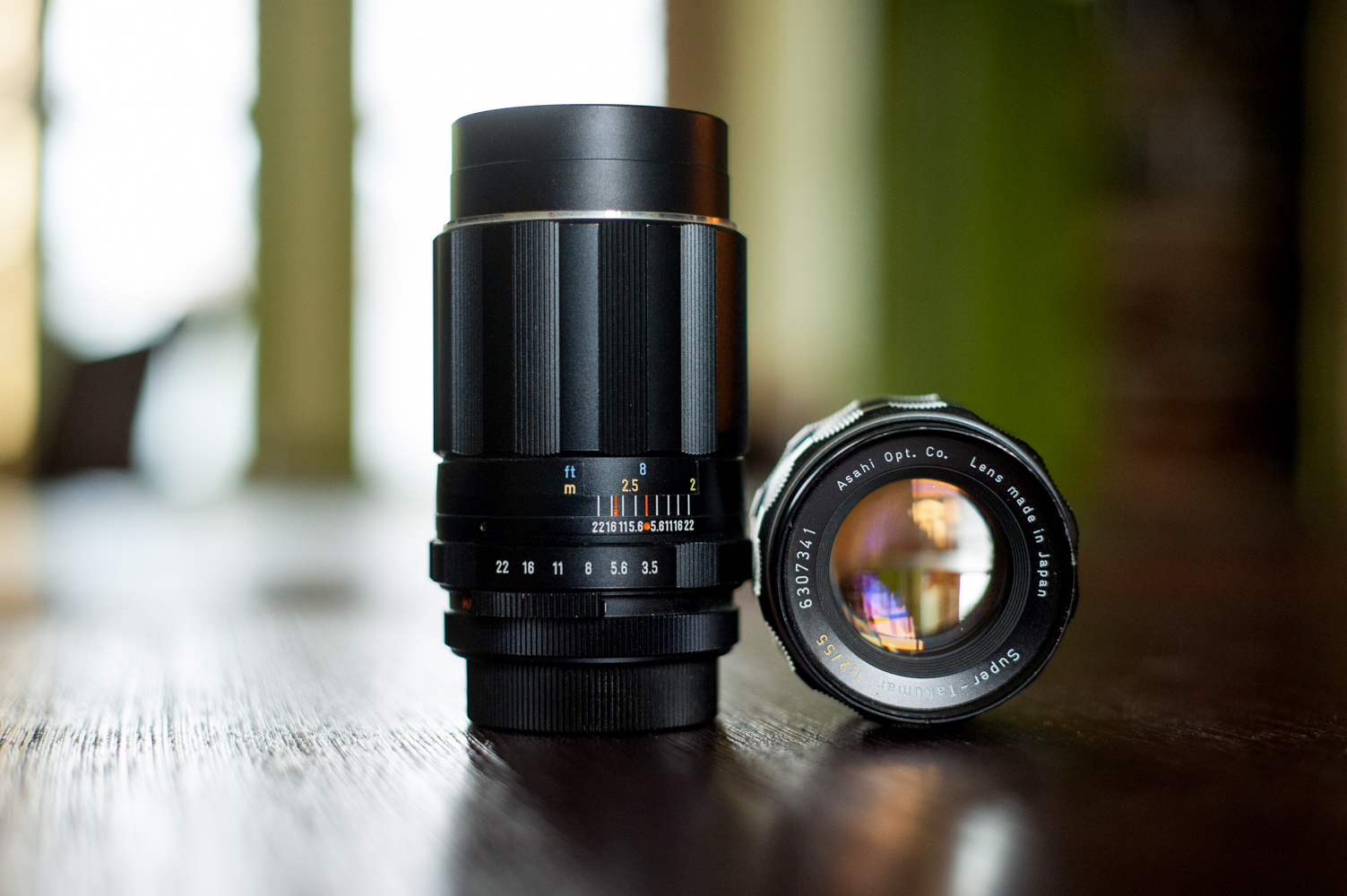
These are beautifully engineered, small and sturdy gem stones which have quite beautiful color rendering and contrast out of the lens. They are made of high quality glass and they can take sharper photos compared to other lenses of the same age and render a beautiful background with tactile 3d feeling. For that reason these days they are so popular and the prices has risen quite a bit. Various Takumar lenses
has been chosen to be the best M42 lens on user polls such as Asahi Super-Takumar 1.4/50, Asahi SMC Takumar 3.5/35 and SMC Takumar 1.8/85. Today their prices are high compared to other ones but of course it is possible to find an old Pentax Spotmatic
camera sitting on a flee market stand with one of those on it.. which you should not miss.
Praktica Pentacon lenses :
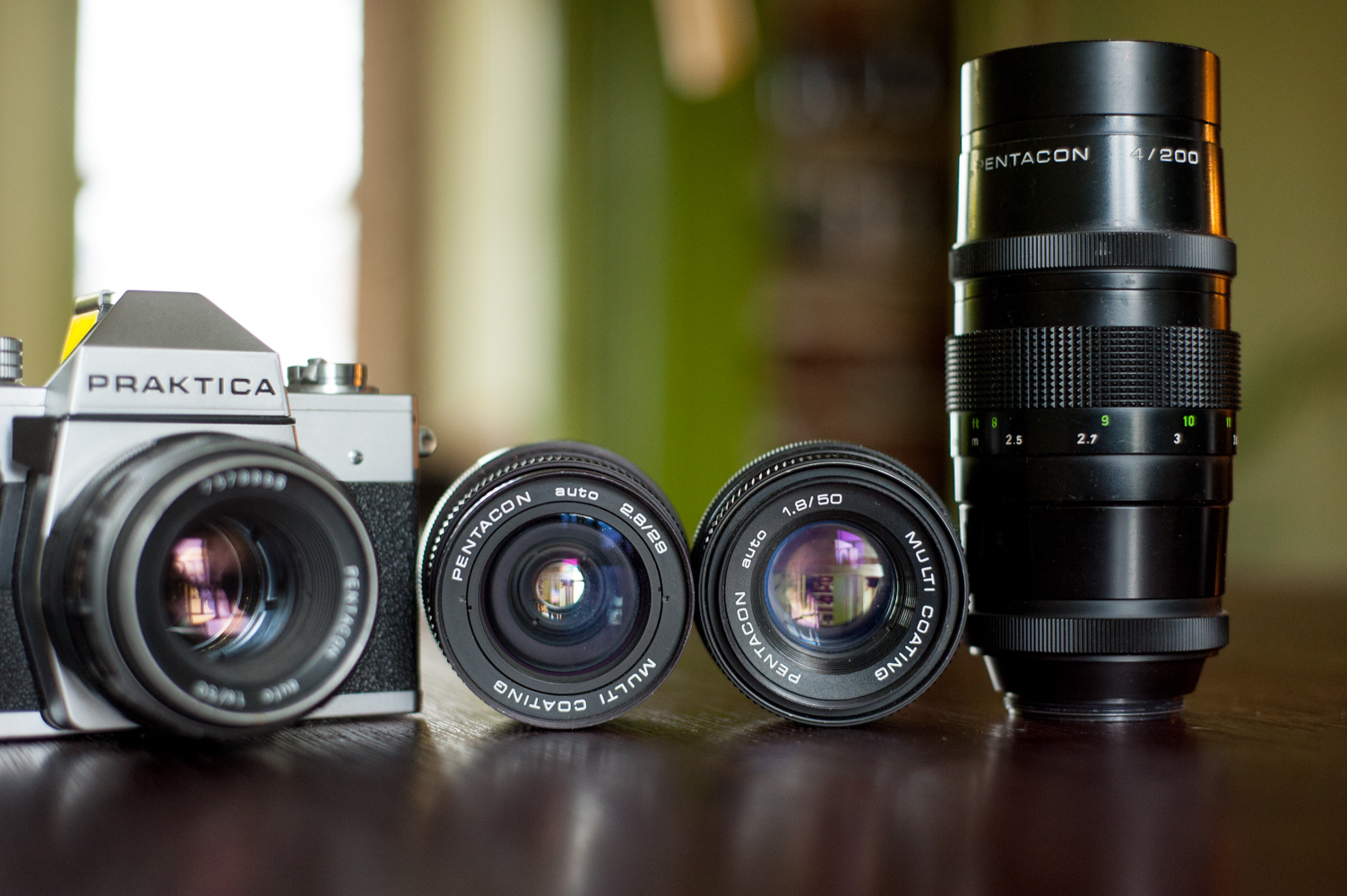
Praktica is a German camera and lens brand which is derived from Zeiss and Contax brands. Pentacon are their lens brand which you can find quite a lot in second hand market with low price tag. These lenses have a good color rendering and smooth bokeh. They have a color rendering which looks retro and nice to experiment with. Their only weak points are not being quite sharp and having quite a lot of chromatic aberrations. One specific Pentacon lens, Pentacon 135mm f/2.8, has been chosen the lens with the most beautiful bokeh in user polls and called the 'Bokeh Monster' for that reason. Another Pentacon lens, 50mm 1.8 MC, is one of my favorites with a good contrast, good sharpness, colors and bokeh.
Mamiya Sekor, Tokina and other Japanese lenses :

Famous with their very good cameras, especially on medium format, Mamiya brand is one of the best brands which produced M42 lenses in the era of screw mount cameras. In my experience, they are not as sharp as the Zenit or Pentax lenses, but having a beautiful contrast and natural looking color rendering just out of the lens, which makes them special, even for today's standards. Not to mention that the background rendering (bokeh) is also quite beautiful. Mamiya Sekor is the lens brand which is used by Mamiya cameras but you can find exactly same lenses from the same factory with different brand names. These brand names vary like Vivitar, Rolleinar, Chinon, Rikenon, Yashinon, Tominon, Cosina and they are all made by the same factory (there is a debate if the factory is 'Tomoika', 'Tokina' or 'Riken' in forums, so no one knows for sure who was it). Refer to forums and study first if you like to buy one of these brands and want to know other different brand names of the lens you like to get.
Another Japanese lens brand I like to mention is Tokina. I had really nice results with all my Tokina lenses on M42, Canon FD and Nikon mount ones. They have a very good contrast and color rendering out of the lens, just like the other brands I mentioned in this topic (perhaps the same factory..).
Some of those lenses, like Mamiya Sekor SX lenses, will not work directly on DSLR adapters because they have aperture pin on the back of the lens which needs to be pressed in for aperture to work. I overcome this issue by screwing the back plate off and reinstalling the aperture pin with a correct size plastic tube around to make it always pressed.
Thing to be careful when buying vintage lenses
Lens fungus

Some of the vintage lenses which are sold in the second hand market today are coming from an old and forgotten photo camera bags which were waiting in a shed or attic for years. Being kept in a dark and moist area for years, such lenses develop a kind of fungus inside them which feeds on and etches the lens glass (yes, it destroys the glass!) and leave a mark that looks like a tiny spider web or a white spot that is bigger than a dust particle can be. This fungus develops only in a moist and dark environment. Therefore take good care of your lenses always leaving their front side open facing light, and keep them in a dry and non-humid environment. Never leave your photo camera or any of your lenses inside a closed camera bag or case etc. for a long time (also your newer DSLR cameras and lenses). If you encounter a lens like this, do not buy it. It is not always easy to clean and they damage the lens coat, glass and most of the time they leave a permanent mark on the lens. There is also a rumor that customer services of today's popular lens brands, like Canon, Nikon, Zeiss etc., do not accept repairing lenses with fungus on it to avoid contamination in their workshop. If you are lucky, smaller and lighter fungus might perhaps be cleaned with special lens cleaning solutions like Eclipse optics cleaning solution, alcohol or peroxide solutions or some of them can be wiped away with a cloth leaving little mark behind.
Stuck aperture blades
Another common problem seen on second hand vintage lenses is stuck or oily aperture blades. The aperture of the lens you are using must be able to move easily, should not contain marks of sticky oil and must not get stuck when you open and close them. However, if you see oil on lens blades of a vintage, do not judge it immediately. You may see that some vintage lenses which has oil on their aperture blades, but blades just operate nicely without problems. I have some Russian Zenit lenses with oil on their aperture blades just like that and they are working ok, so it is not a problem if the oil is not sticky. To check the aperture blades of a lens, you need to find the aperture pin on the back of the lens, set it to highest f stop number, and open and close the aperture gently by playing with that pin seeing if it moves smoothly. Or if the aperture is manual, play with the aperture ring. If you experience a lens with sticky aperture blades, buy it only if you want to repair it yourself for hobby, because it may not be an easy repair depending on the lens model. Aperture problems with vintage lenses are generally repairable.
Stiff focus ring
This problem happens because of the dried out oil on the helioid part of the lens, which screws the lens in and out when you focus the lens back and forth. It is a very common problem with vintage lenses. The solution is opening the lens, unscrewing the helioid part and cleaning and re-greasing it. Stiffed out oil does not soften by itself as you use the lens so if a seller tells you such a story do not believe it. Buy such a lens if you can live with the stiffness or want to open and clean it yourself for hobby.
Past bad maintenance or cleaning
Some of the vintage lenses may have marks of their past repair, maintenance or cleaning that has not been done correctly and damaged the lens itself. Most common ones are lenses cleaned roughly with scratched and sanded out lens coating, cleaned out fungus marks, usage of incorrect cleaning solutions that dulled out the lens coating and spilled oil on lens surface when cleaning the helioid or aperture blades. You can spot those by using a technique of spotting a light source to the back side of the lens glass and looking inside of the lens on a correct angle. Then the history of the lens will be revealed to you. Just ignore all of the lens glass bubbles, small scratches, small amounts of dust that does not dull out all the lens surface, small dirt or finger marks on front or back surface of the lens. These marks will not appear on your photo nor seriously affect the quality of your photo. Look specially for dulled out coatings, scratched swirl marks, sanded out or damaged lens coating, or anything that looks dull or weared-out on the lens surface of the lens. Depending on the problem, the lens can be repairable or not. Remember damaged coatings can never be repaired completely and affects the quality of your photos.
Hope you enjoy using vintage lenses on your new digital SLR. If you want to study further about these vintage lenses, just check out the following forums about vintage lenses:
